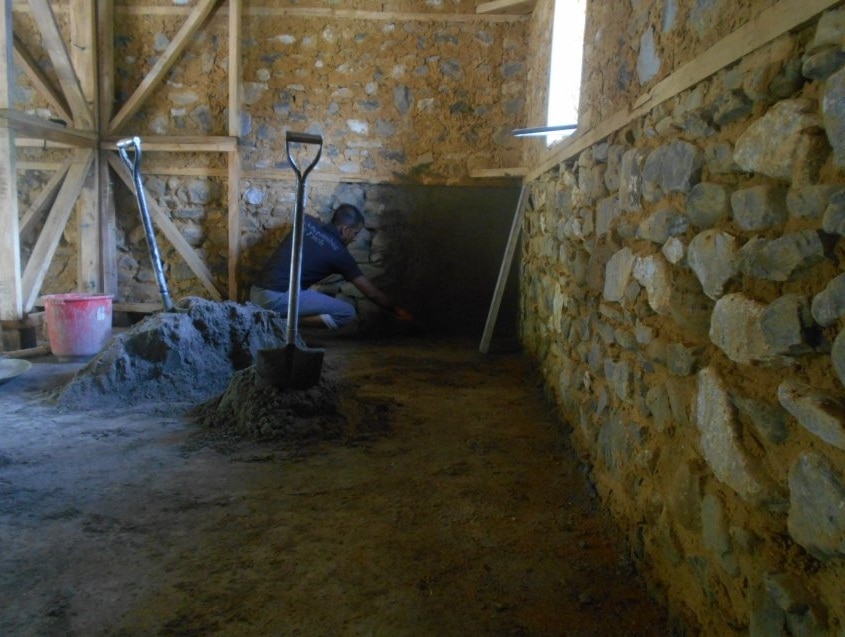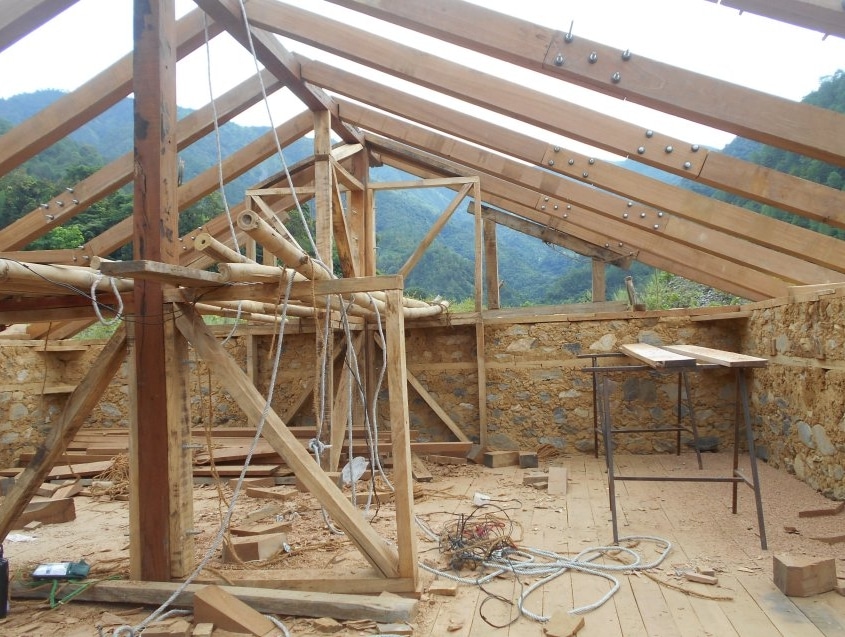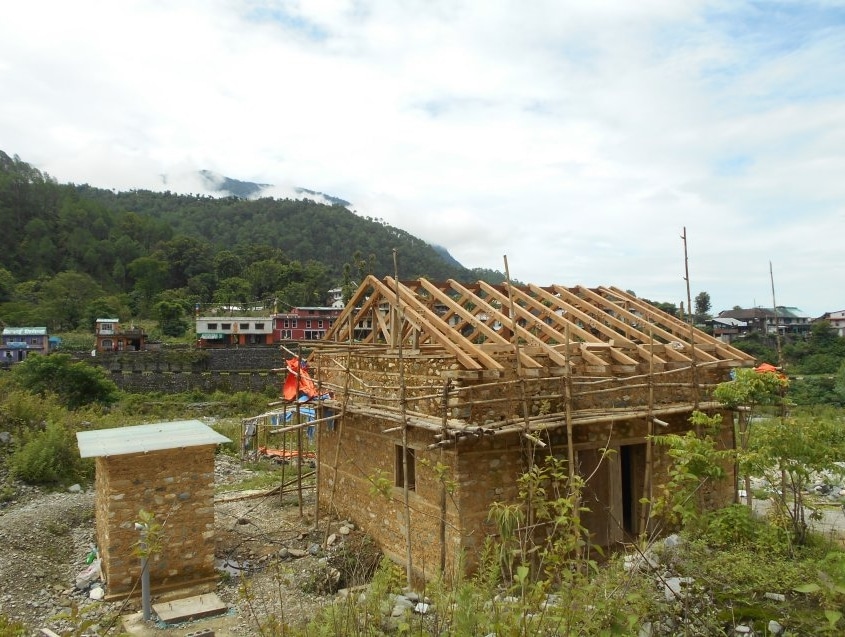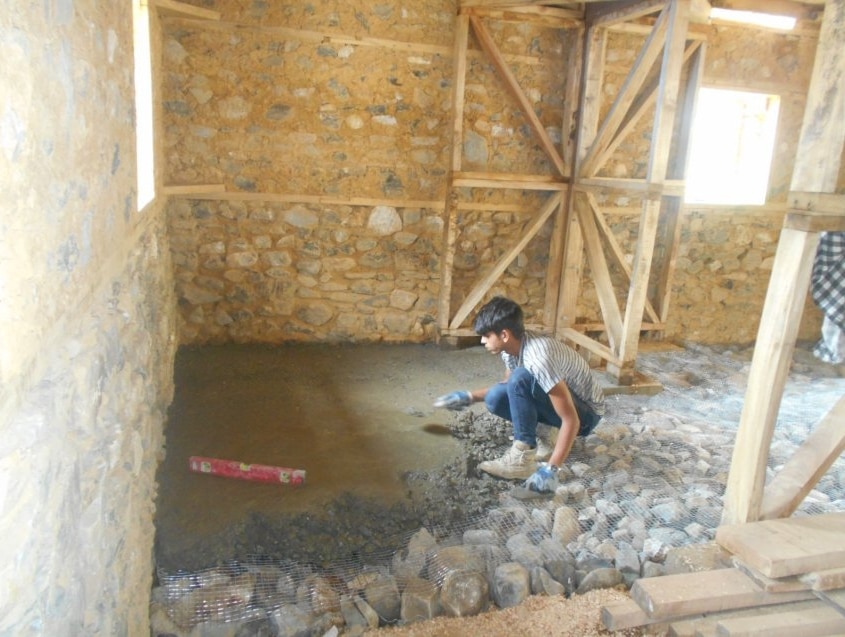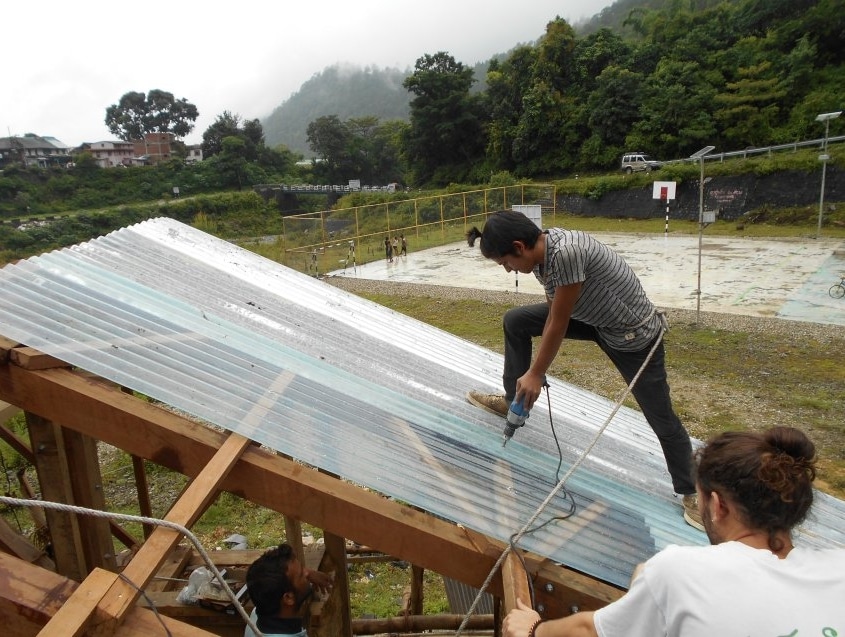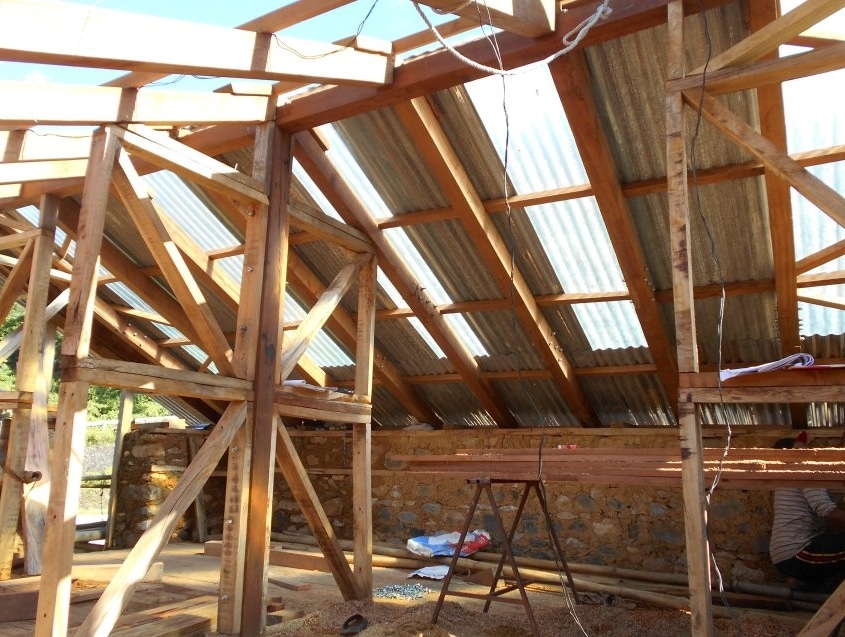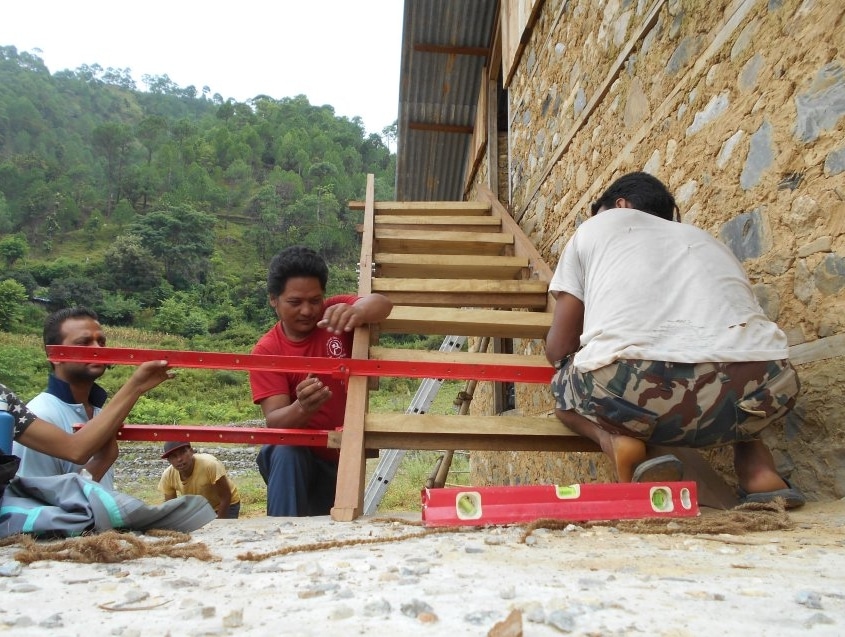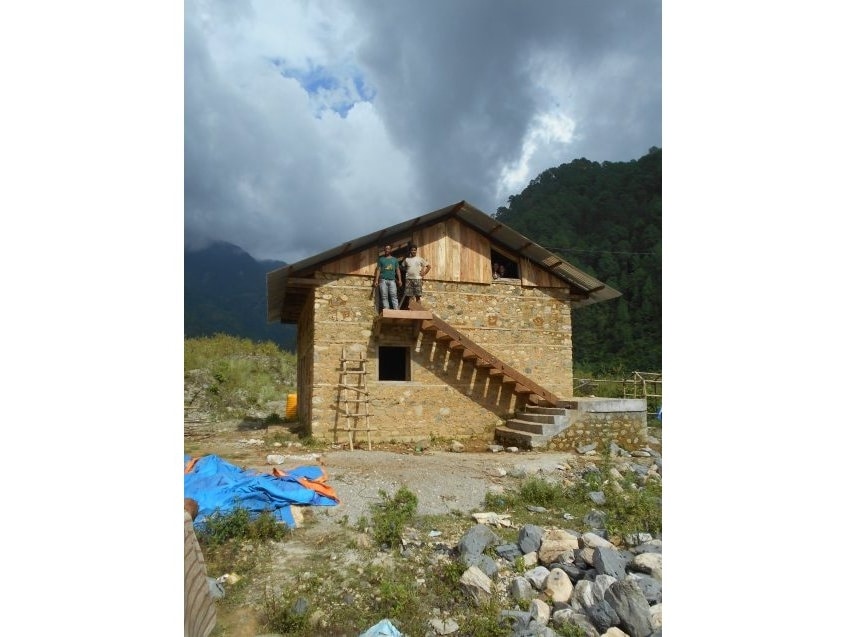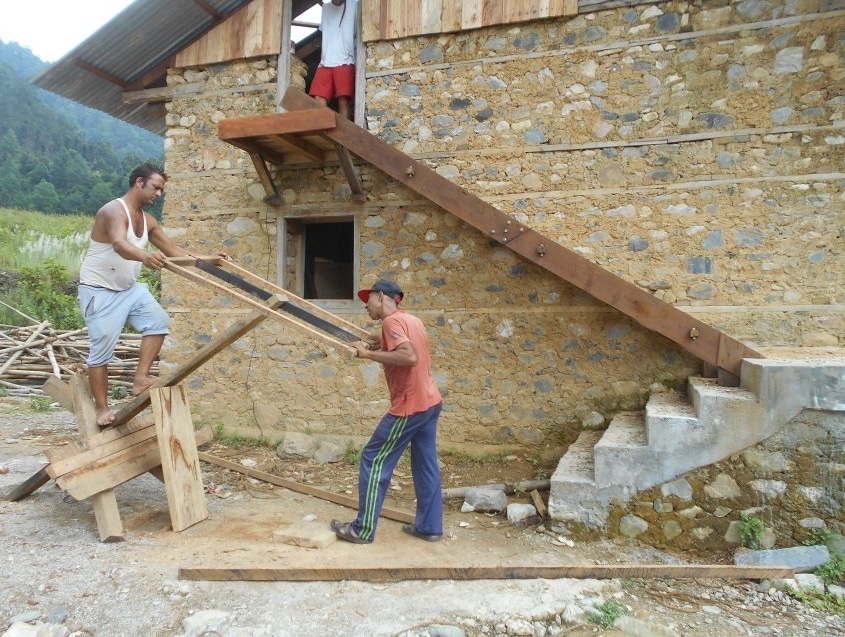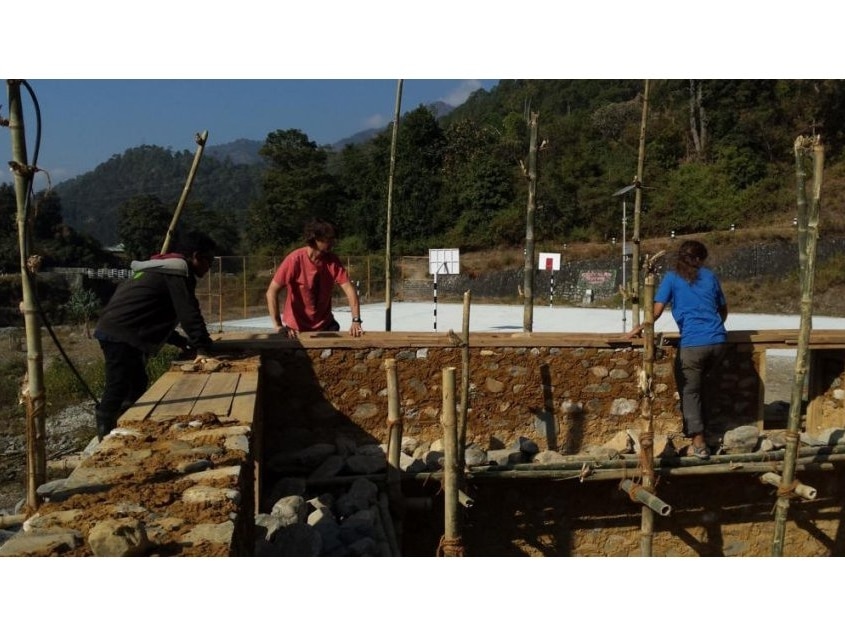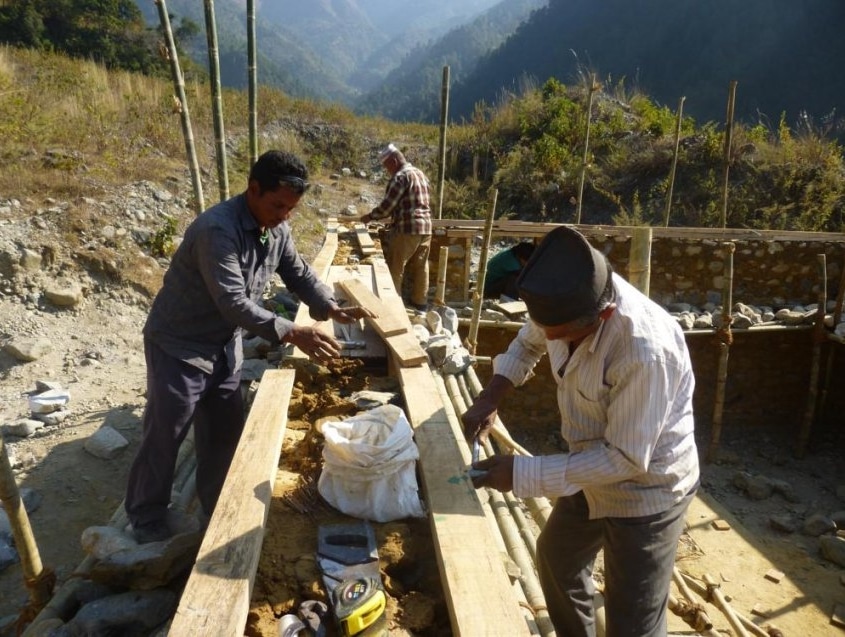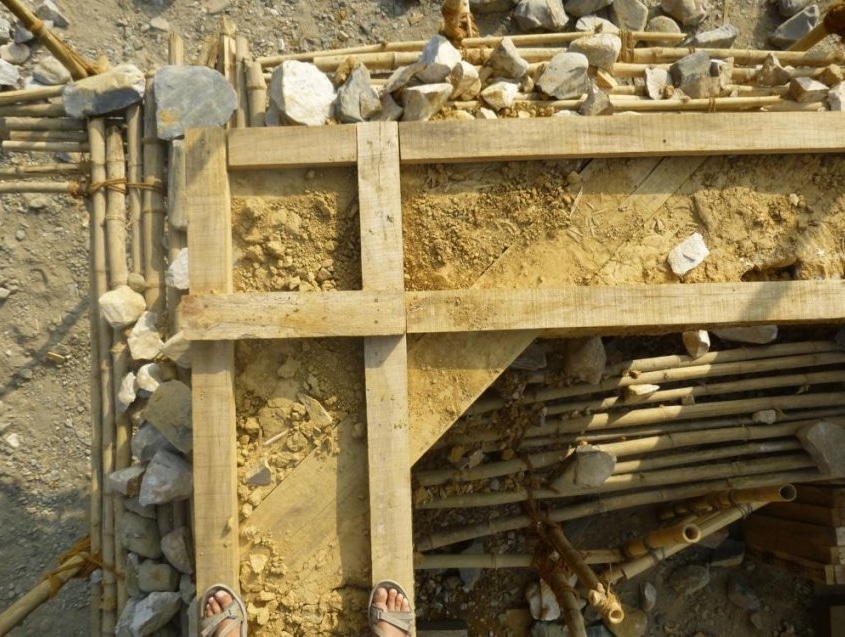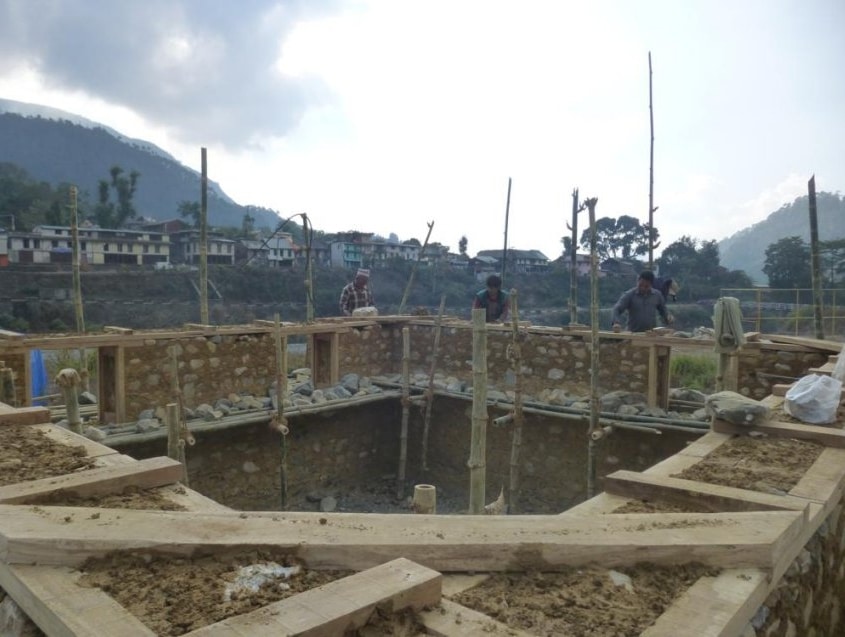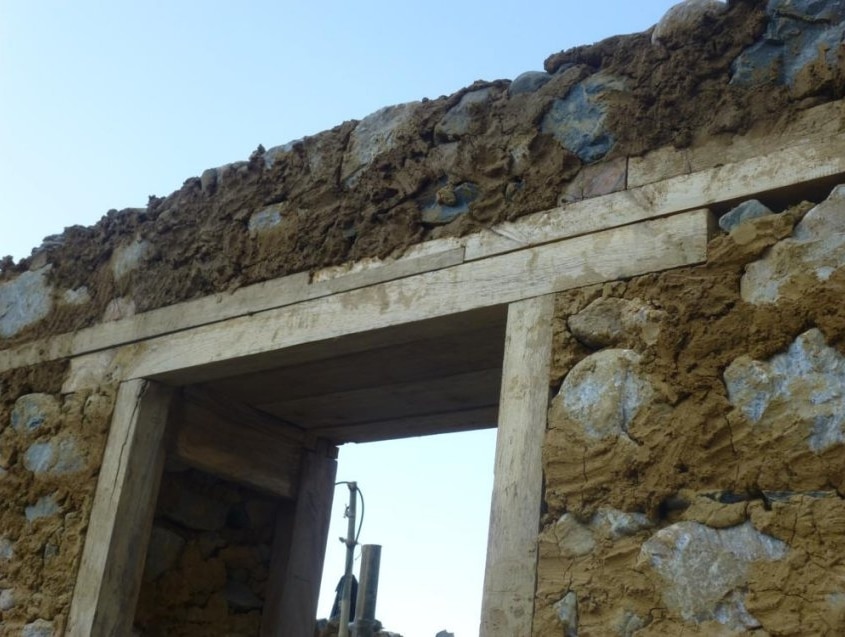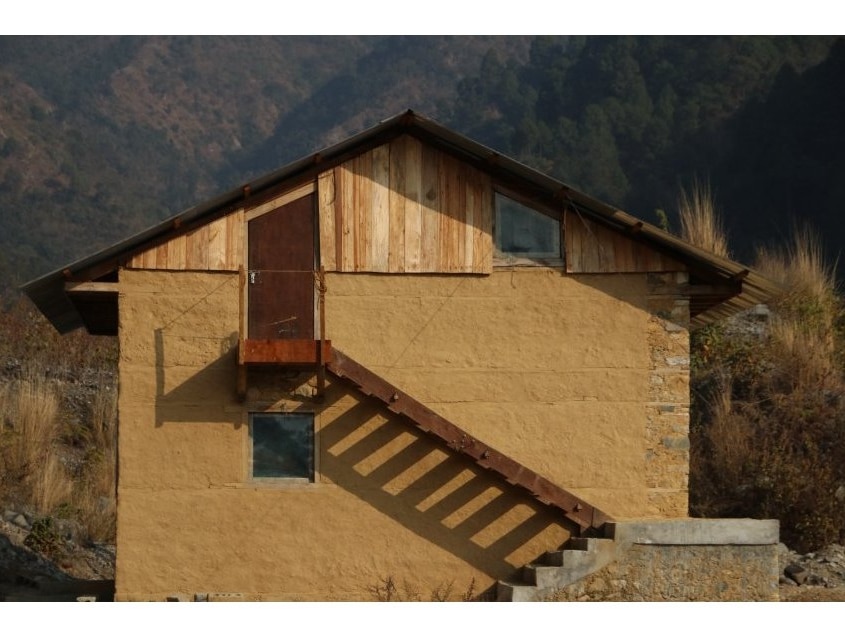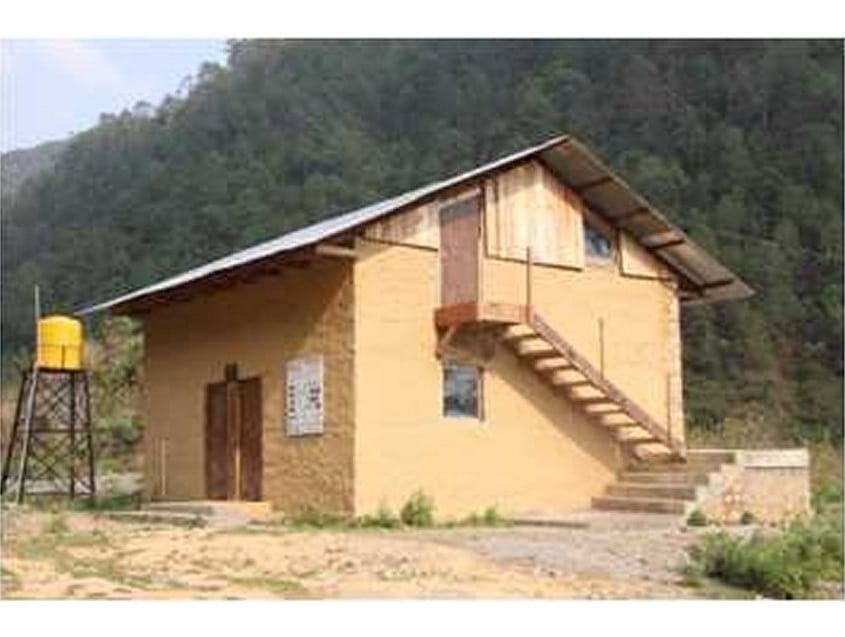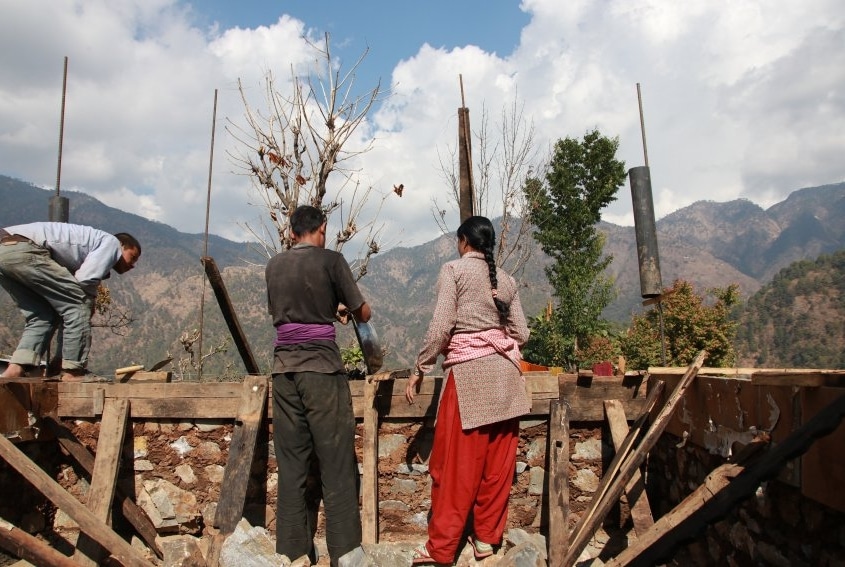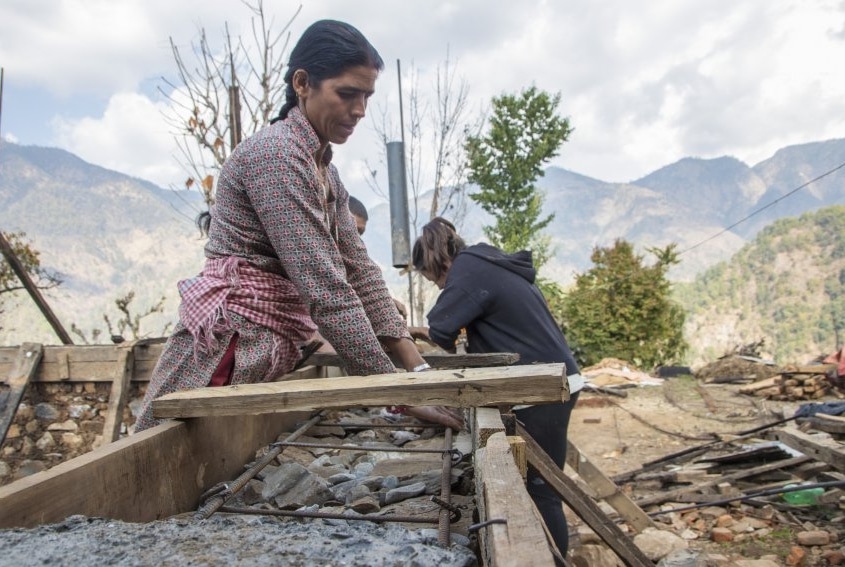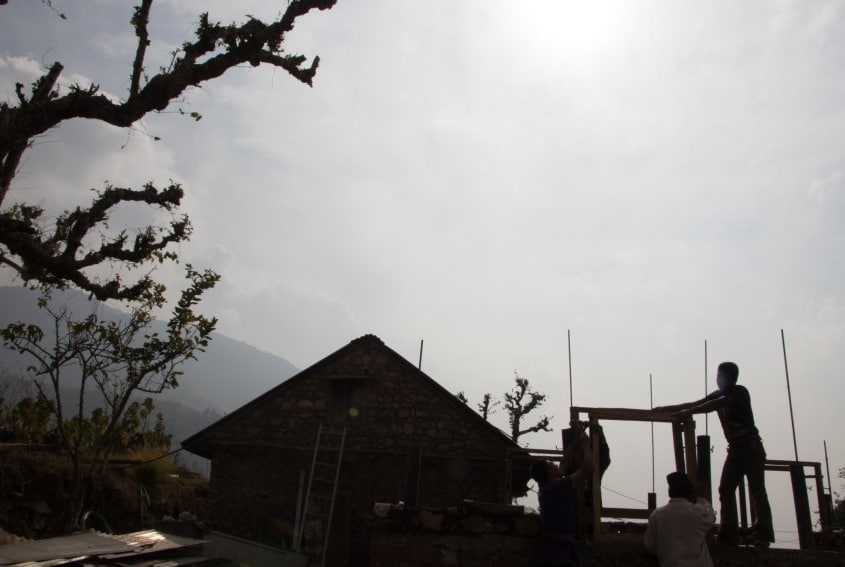Seismic-Resistance
The first selected technique to study and improve its characteristics was stone and mud (dhunga mato). It is the most widespread local traditional technology in rural Nepal, in which all the used materials are local: stone, wood and mud.
During the prototype construction, Awasuka modified several constructive solutions and improved several structural problems that this type of traditional architecture was not solving, despite having many seismic-resistant features already.
But even though it is a very interesting local technique, after the prototype construction it was found that it was too expensive for social architecture because it required a lot of manpower. Many masons are needed for a single stone wall: two masons for stonelaying (one on either side), a couple more for cornerstones and two more for mud mortar preparation. Due to all this, it was concluded that its implementation price was not affordable for the pursued social housing model.
IMPORTANT: But despite not being chosen as a new construction technique, the lessons learned during the prototype construction were very useful in considering the retrofitting of existing stone and mud houses.

